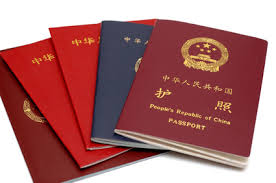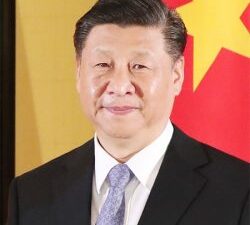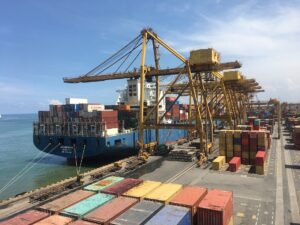Late at night, in the border region between Mexico and the United States. A U.S. police officer standing on the other side of the land border uses a flashlight to illuminate the riverbank on the Mexican side of the barbed wire fence along the border. Why?
Because a crowd is moving along the riverbank. Some of them are men with babies in their arms. In this comical scene of U.S. police officers providing the convenience of lighting for those trying to smuggle themselves into the U.S., one aspect of the current situation in U.S. smuggling today can be discerned.
A new face has recently joined the crowd of people smuggled into the U.S. through the Mexico-U.S. border. Chinese.
The number of Chinese nationals who have reached the U.S.-Mexico border via the Latin American route has surged recently, reaching a historic peak of more than 6,500 Chinese smugglers since last October, a 15-fold jump from the same period last year, according to U.S. Department of Homeland Security statistics.
I was greatly surprised to learn this news, as I had tracked down and interviewed the “snakeheads” and stowaways who manipulated the illegal travel of Chinese stowaways in the early 1990s. I had thought that Chinese society had changed drastically and that there were no more Chinese stowaways. The “snake head” manipulating Chinese stowaways, which eventually went downhill…
In 1994, my nonfiction book in Japanese, “Snakeheads,” became a bestseller in Japan. Because it coincided with a period when there were many stowaways from Fujian Province posing as Vietnamese refugees, there was a high level of interest in the book in Japanese society, and the book received a lot of exposure in the Japanese media.
The late Takashi Tachibana featured “The Snake Head” in a series of articles in “Shukan Bunshun” and praised it highly. He was interviewed by seven or eight media outlets in one day, including TV stations. The book was picked up by many media outlets in Japan, the U.S., the U.K., France, Germany, Russia, Italy, and other countries, and became a topic of conversation in China, where World Knowledge Press published a Chinese edition of the book under the title “Point and Shoot Snake Head. The ripple effect after publication was also significant. The film critic Hase Seizhou, who read “The Snake’s Head,” was inspired by the book to write an adventure novel, “The Nightless City. When the book was first published, Hase made it clear in the book that he had written it based on “The Snake’s Head.
The Snake Head” attracted the attention of Japanese police authorities, who were troubled by the problem of stowaways from Fujian Province. The police headquarters of one local government purchased 500 copies of the book at one time. At a police academy, “The Snake Head” was also used as a supplementary reader for police training, and thanks to this, many police officers learned my name.
The Hong Kong film director and producer Derek Yee read “The Snake’s Head” and made the film “Shinjuku Incident” (Chinese:新宿事件), which was released in 2009 and stars Jackie Chan as a Japanese actor. The Japanese actors in the film included Naoto Takenaka and Hiroyuki Nagato. My name is also included in the ending of the movie.
With the rapid development of the Chinese economy, many Chinese people have been able to freely travel abroad since the 2008 Beijing Olympics, and they are now important customers that support the tourism businesses of many countries. Due to these changes in social conditions, “Snake Head” eventually went out of print.
I took the out-of-print publication of a best-selling book as a sign of progress in Chinese society and believed that China would no longer produce stowaways.
It was precisely because of this belief that I was astonished to read the latest reports about the large number of Chinese smugglers heading for the U.S.-Mexico border.
If they make it to South America…Chinese hope to smuggle themselves into the U.S.
In 2003, the U.S. Border Patrol seized 48 stowaways of Chinese origin who attempted to penetrate the U.S. border by means of smuggling. However, he stated that U.S. authorities had no record of this until 2002, and that “we have never caught a Chinese national (on the same border).
However, the situation took a sharp turn at the end of 2010. The number of Chinese nationals in the herd trying to smuggle themselves into the U.S. has increased with each passing day. A Chinese official living in the U.S. told me in an interview via social networking service: “By March of this year, the number of Chinese who are trying to smuggle themselves into Panama will increase.
By March of this year, most of the refugee camps in Panama were occupied by Chinese. One local photographer testified that more than a dozen cars’ worth of stowaways were being brought in a day, and most of the passengers were Chinese. According to the Panamanian government, between January and March of this year, 3855 Chinese stowaways passed through the Darien isthmus in the border region between Colombia and Panama. Their destination was the United States.”
It is a long way from China, on the edge of the Pacific Ocean, to the distant United States. With more South American countries granting visa waivers to Chinese passport holders, it is now possible to fly to some South American countries close to the United States. This is a boon for those wishing to smuggle themselves into the United States.
Ecuador is now an important landing point of choice for many Chinese. From there, they march on foot in columns led by “snakeheads. At the end, they can enter the U.S. by breaching the U.S.-Mexico border.
When I was researching my book “Snakeheads,” the snakeheads called the stowaways, most of whom were from the relatively poor Fujian Province, “ducklings. Nowadays, however, many of them are intellectuals, and the stowaways call themselves “runners. China’s social conditions have strongly influenced the change in the composition of stowaways.
Many Chinese stowaways had “good jobs” in their home countries.
In order to help Chinese who were able to smuggle themselves into the U.S., Chinese residents in the U.S. have launched an assistance program to donate daily necessities, food, and other items.
A friend of mine who participated in a donation drive in Monterey Park, a suburb near Los Angeles, was surprised at the scene.
There were so many people coming to pick up the donated goods. There was a long line around the hotel. There were both men and women, the oldest being around 50 years old and the youngest in their early teens. Each of them is cleanly dressed, and their faces and behavior are calm. They do not appear to be the stowaways that I had imagined, struggling and struggling to survive.
A friend of mine checked with the leader of the donation drive and received the following information: “The stowaways are in Shandong, Shandong Province, and Shandong City.
The stowaways came from many provinces, including Shandong, Jiangsu, Zhejiang, Hubei, and Shaanxi. They had good occupations in China. Many of them have Chinese automobile licenses, which indicates that they owned cars in China. Their occupations also varied. In the past, most of the stowaways were from rural Fujian, but now many are middle school teachers, engineers, insurance diplomats, financial workers, and many have even started their own companies.”
They all communicate in a common language. Many use computers, and quite a few speak English. They can even use the Internet to apply for admission to U.S. schools for their own children. Some even opted for donated books.
However, many people cannot endure the harsh smuggling migrations and immigrant life abroad. Some went all the way to Mexico, but after realizing the severity of the smuggling route, gave up on smuggling into the U.S. and returned directly to China using the Chinese passport they possessed, while others were lucky enough to be smuggled into the U.S., but became upset by the daily routine of illegal immigration and chose to return to their familiar home in China.
After “The Snake Head” went out of print, I thought there was no longer any need to write a sequel to it, but I felt that perhaps there would be a market need again to read a sequel. I was stunned to find myself staring at “The Serpent’s Head” on the bookshelf.
(Author/journalist Mo Bangfu)









